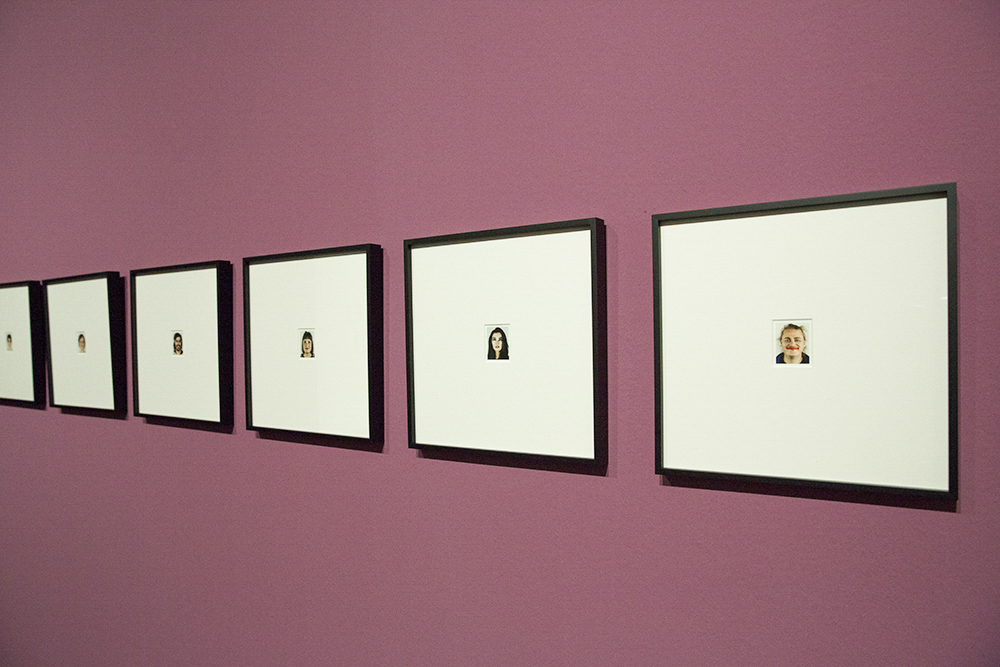︎DE
The result is printed in passport size
The 22 selected passport photos and the associated video work were shown at the group exhibition “Framing Identity. The photographic gaze of Generation Y”, an exhibition of the Museum of Photography in halle 267 in Braunschweig in January and February 2020. Curated by Anne Wriedt and Franziska Habelt The walls were painted with the Trendycolor of 2020 Cassis.
_Episode
A passport photo is very small and it is supposed to represent myself as a person that can be identifed any - where. Every year, when I extend my visa at the foreigners’ office, I must take a new passport photo of my - self. The officer checks very carefully whether the picture matches my appearance. With the strange and abnormal faces as passport photos, I wanted to show an ironic situation of how one can prove the existence of a person with a small picture.
I tried the foreigners’ office to see if I could extend my visa with my passport photo from the project. However (probably, of course) the photo was rejected and I had to have my residence certifcate extended with my “normal” ID photo.

Installation shot “Framing Identity. The photographic gaze of Generation Y ”,
Museum of Photography in Braunschweig, halle267, 2020
Museum of Photography in Braunschweig, halle267, 2020
Although Min Kim’s passport photos meet the standard for passports or ID cards at first glance, it is impossible to identify the faces in her photos. The young people of Generation Y, whom she portrayed for her work “An Abstract Action for Beauty,” wear eye-catching makeup that makes their faces appear garish, almost clownlike. The young men and women applied this makeup themselves while jumping on a trampoline. The focused act of applying makeup thus became impossible. As one of the oldest social practices, makeup is used to emphasize personal attractiveness and to cover up blemishes. On the one hand, the work can be understood as a critical allusion to the social ideals of beauty that primarily affect women, because the brightly made-up male portraits play with the irritation of the viewer. On the other hand, it becomes clear here that identity is equated with similarity in passport photos. This also makes it possible to question the purpose of the passport photo, which was objective and sober from the beginning in the nineteenth century and has since been used primarily in security, criminal, and forensic contexts. It is now used to prevent identity theft through biometric recognition processes.
- Anne Wriedt, curator of the exhibition “Framing Identity. The photographic gaze of Generation Y ”, Museum of Photography in Braunschweig, 2020